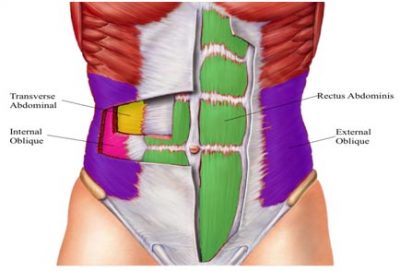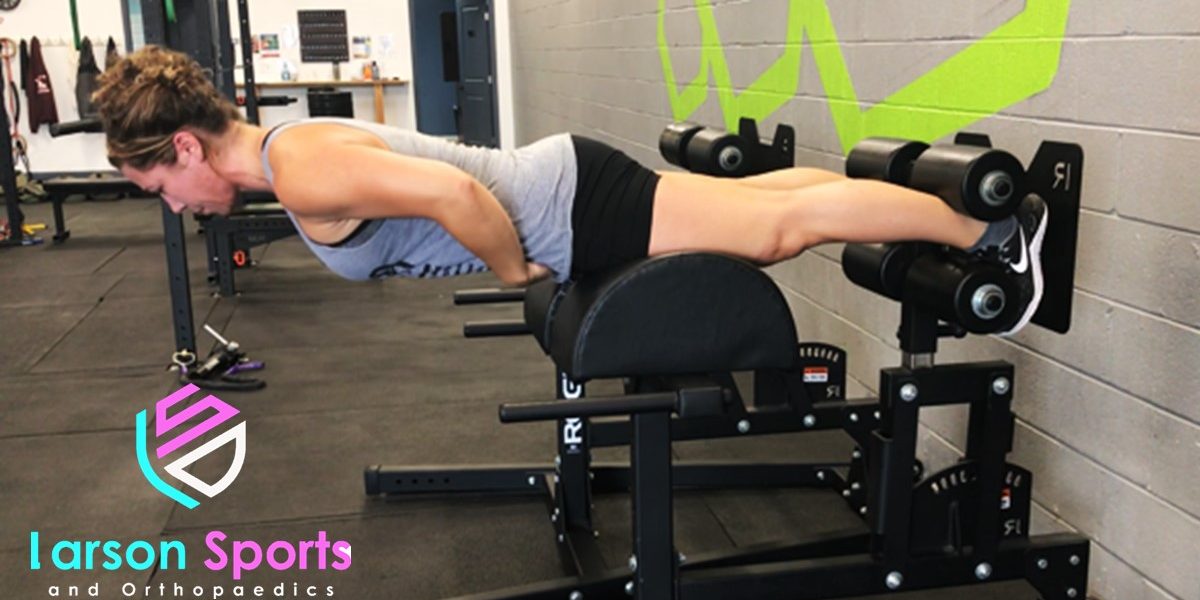Core strength and control is one of the more difficult topics for coaches and trainers to teach. People in functional fitness gyms want to smash snatch PRs on their lunch hour. They want to crush their last Fran time. They don’t want to work on their transversus abdominis. Boring, right? Nobody says, “Wow look at the quadratus lumborum on that guy!”
Well, I’m here to tell you about the importance of core strength for your athletes.
A strong core isn’t flashy, so it doesn’t get much recognition. But it is the stable base that provides the foundation for all those impressive moves that they want to master. A strong core is the forgotten foundation of functional fitness.
Core Control isn’t just a buzzword. Athletes with a strong core have a massive head start in their sport. Why? Well, there are many reasons but a primary and often under-recognized one is because they spend less time injured!
Core Strength Prevents Injuries
We know core strength and control prevents injuries because doctors, therapists, and athletic trainers have done extensive research on this very subject. In fact, a lot of studies show that core control prevents extremity injuries. We’ll talk in more detail below about the specific studies but taken as a whole the research is pretty definitive.
Studies show that good Core Strength can prevent injuries to the ankles, knees, shoulders, elbows, and even hamstrings. And it’s not just in specific settings. We see that core control reduces injuries among athletes in basketball, baseball, soccer, and many other sports. And one of the major aspects of rehab for any injury is a focus on core strengthening.
Studies show that better core strength gives all of the following benefits:
- Reduce soccer players chances of ankle injuries by 25%.
- Reduce the chance of all-sport ACL tears by 25%.
- Reduce the risk of all injuries in NCAA basketball players.
- Reduce the risk of hamstring tears by 20% or more in soccer players.
- Reduced risk of shoulder and elbow injuries in baseball pitchers by 66%.
Of course, it could be possible that good core control is associated with reduced injuries but not actually the cause of reduced injuries. However, when we intervene by taking clients and athletes through a focused core control workout program, they have fewer injuries afterward. In fact, many sports franchises will now bench players who fail a test of core strength and stability in order to prevent injury. They only allow these athletes to play once they adequately improve their core strength.
If you want more information about specific studies, check out the end of this article where I’ll review some specific studies and give you all of those details.

Why else is core control important?
The main focus of my LSO website is to promote safe, functional fitness by educating both athletes and coaches. So my main concern is that you know core control prevents injuries. Period. Of course, I’ve been through the phase where I thought I was indestructible. (It only lasted until I was 19 years old and herniated a lumbar disc, by the way.) So I know that injury prevention isn’t a compelling concern for all of your athletes.
So how else can you sell your athletes on the importance of core control? What you need to do is show them that the path to better performance involves core control no matter how they look at it.
Core strength provides stability.
One way to engage your athletes is to remind them that core control provides stability. And stability allows for better lifts. You can’t land a snatch PR if that weight comes crashing down on a wobbly platform. Your spine, elbows, or shoulders will fold like a house of cards.
Core control is all about being able to correct for the major and minor perturbations that occur during activity. Without it, you can’t hit your best lifts. Because your PRs all involve some significant perturbations to your position!
Core strength generates power.
Your core muscles are the strongest ones in your body. Think about it: We are talking about your abdominal muscles, back, and glutes. They are big, they are strong, and they can do some work.
Remember the phrase “core to extremity” from your Level 1 class ( for those who took it.) A strong, stable core can generate far more power than your extremities could ever hope to. The most efficient way to do work is to generate power from your biggest muscles and efficiently transfer that momentum to your extremities.
Core strength improves efficiency.
A stable core is self-correcting. Moreover, it acts as a spring, storing energy and transferring it. The recoil of the muscles helps with this. However, the compressed abdominal cavity uses the power of fluid dynamics to transfer that energy also. Contracting your core increases the pressure inside your abdomen. Fluid under pressure becomes very nearly solid.
A slack core is like an empty soda can: easy to crush, with little inherent stability. A contracted, tight core is like a full unopened can: It has a ton of internal pressure that makes it uncrushable. And because of that stability, a tight core transfers energy very well. So good core control allows you to transfer the momentum from your lower body to the bar without much loss of energy.

So what is core control?
You’ll notice that we interchange core strength and core control in this article. They aren’t truly the same though. Core strength is vital for core control. But core control builds upon the base of core strength and includes coordination and balance. One of the biggest problems with instructing clients on core control is that many coaches don’t even know how to define it. So it’s important to have a rehearsed definition that you understand and can help athletes apply. Fortunately, there are many definitions of core control in both the community and in scientific research.
Some definitions of core control:
- Maintaining a stable central base to the body via abdominal, lumbar, and hip muscle strength and control.
- The ability to control the position and movement of the trunk and pelvis.
- The ability of the lumbar-pelvic-hip complex to prevent buckling and to return to equilibrium during sporting activity.
- The ability to control the trunk over the pelvis for optimum production, transfer, and control of force and motion to the extremities during athletic activities.
- The ability of the lumbar-pelvic-hip complex to prevent buckling and to return to equilibrium after a disturbance.
I’d suggest you pick whichever one of these definitions you feel comfortable with and memorize it. That way you have a natural starting point when you begin instructing clients on core control. Moreover, it gives you a framework from which you can build your core control fitness program.
What is “The Core?”
I’ve waited until here to define the “core” of the body because I wanted you to see those definitions above. You’ll notice that these definitions of core control have a few things in common. First of all the core is not just the abs. It also includes the lower back and hip muscles.
Many trainers and fitness coaches view the core far too narrowly. Which is part of the reason coaching athletes on core control can be such a struggle: you may only be addressing half the story.
The Major Muscles of “The Core”:
- Transversus Abdominis
- Rectus Abdominis
- Internal Obliques
- External Obliques
- Quadratus Lumborum
- Erector Spinae
- Gluteus Medius
- Gluteus Maximus
- Diaphragm
- Pelvic Floor Muscles

You’ll notice there are quite a few more muscles than just abs. This list includes the front, back, and sides of your abdominal wall as well as the caps on either end – the pelvic floor and diaphragm. Which is why many women have such difficulty with core stability after childbirth. And its also why control of your breathing is also important to core stability.
It’s worth noting that visible abs have less to do with your core strength and more to do with your diet. As the saying goes, abs are made in the kitchen.
On Beyond Core Control
One aspect of central control that I feel is often overlooked is scapular control. Scapular control is similar to core control, but for your shoulders. I define it as the ability to keep the shoulder joint and scapulae (shoulder blades ) in an optimum position to allow free and unrestricted shoulder motion and transference of power.
Improper positioning of the scapula is a major correctible cause of shoulder pain and rotator cuff damage. Without proper shoulder positioning and muscular control, your shoulder is subject to subtle instability and impingement from the surrounding structures. Over time, these are what lead to injuries like rotator cuff tears and labral tears.
However, that’s an article for another day. If you’d like to be the first to receive that article in the future, sign up for our blog updates by entering your email address in the little pop-up box on this page.
Articles Referenced
NCAA basketball players with better hip strength had fewer injuries of any kind during the season.
Controlling the leg below the pelvis is a major component of core control. Training programs that focus on core strength and stability of the pelvis do reduce the incidence of ACL tears and other lower extremity injuries.
Similarly, core control has been shown to protect your knees as well. When athletes have strong hips and core muscles they have a lower chance of ACL injuries. One study of hundreds of athletes showed that the risk of ACL tears was nearly 25% higher in those with weak core muscles and poor core control.
Powers and colleagues showed how important core control is for protecting your ankles. They showed that if your gluteus medius was only able to lift ⅓ of your body weight you were 25% more likely to sustain ankle injuries during sports.
Schuermans published an article showing that increased activation of gluteal and trunk muscles while sprinting was associated with a lower risk of hamstring injuries in soccer players. In fact, a 10% increase in gluteal activity resulted in a 20% decrease in future hamstring injuries! Where else can you get that kind of bang for your booty buck!
Chaudhari and colleagues showed that Professional Pitchers with poor lumbopelvic control were 3 times more likely to sustain upper extremity injury during a season. And they weakest missed nearly twice as many games when they were injured relative to those with good core control.
All References
Arendt, E A. “Core Strengthening.” Current Neurology and Neuroscience Reports.,
Chaudhari, A M, et al. “Lumbopelvic Control and Days Missed Because of Injury in Professional Baseball Pitchers.” Current Neurology and Neuroscience Reports.Nov. 2014
Khayambashi, K, et al. “Hip Muscle Strength Predicts Noncontact Anterior Cruciate Ligament Injury in Male and Female Athletes: A Prospective Study.” The American Journal of Sports Medicine. Feb. 2016
Kibler, W B, et al. “The Role of Core Stability in Athletic Function.” Sports Medicine
Leetun, D T, et al. “Core Stability Measures as Risk Factors for Lower Extremity Injury in Athletes.” Medicine and Science in Sports and Exercise June 2004
Powers, C M, et al. “Hip Strength as a Predictor of Ankle Sprains in Male Soccer Players: A Prospective Study.” Journal of Athletic Training. Nov. 2017
Schuermans, J, et al. “Proximal Neuromuscular Control Protects Against Hamstring Injuries in Male Soccer Players: A Prospective Study With Electromyography Time-Series Analysis During Maximal Sprinting.” The American Journal of Sports Medicine. May 2017
Willardson, J M. “Core Stability Training: Applications to Sports Conditioning Programs.” Journal of Strength and Conditioning Research. Aug. 2007
Willson, J D, et al. “Core Stability and Its Relationship to Lower Extremity Function and Injury.” The Journal of the American Academy of Orthopaedic Surgeons. Sept. 2005

